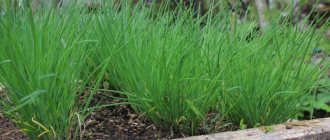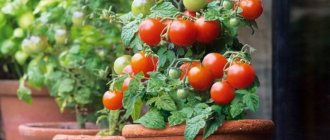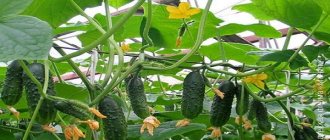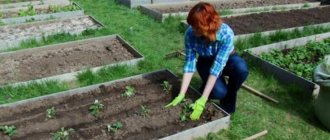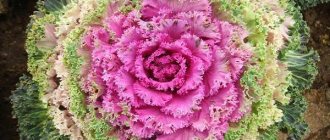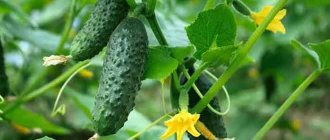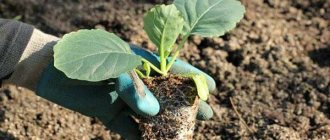Specifics of growing berry crops in pots
Strawberries are characterized by shallow root depths. Thanks to this, it is possible to place the plant in a pot. It is important to choose the right container, suitable substrate and illuminated window sill.
In order for strawberries not only to please you with a bountiful harvest, but also to have decorative properties, you should give preference to remontant hanging strawberries. These varieties are characterized by long flowering and excellent decorative properties. In addition, they produce an excellent harvest.
Day-neutral varieties are ideal for cultivation in pots. Such crops bear sweet fruits throughout the year.
How to choose a suitable pot
When deciding to choose a pot for growing strawberries, you should not rely only on its aesthetic appearance. Beauty and design in this case do not matter at all, since most of the pot will be covered with foliage and berries of the plants. You can choose ordinary flower pots, flowerpots, or oblong plastic containers. You can make a pot yourself, using mayonnaise buckets and cut-off 5-liter water containers as a base. You can decorate homemade pots by painting, gluing beads, pebbles, and shells.
Important! Coconut fiber pots are not suitable for growing strawberries.
The volume of the pot can be different, depending on how many strawberry bushes are supposed to be planted in it. At the bottom of the selected container, it is necessary to make drainage holes that will not allow excess moisture to accumulate in the soil. The drainage layer of expanded clay or broken brick at the bottom of the planting container also plays an important role in the drainage system.
Advantages and disadvantages of the method
This method of growing strawberries is becoming increasingly popular. It has many advantages:
- decorative functions;
- saving space;
- ease of relocation;
- ease of harvesting;
- the ability to create optimal conditions.
However, this method also has certain disadvantages. It is associated with certain material costs. The technique requires the use of special containers and other devices.
In addition, it is worth paying attention to the choice of variety. Not all types of strawberries are allowed to be used for growing in pots. Another disadvantage is the significant labor costs. Planting and frequent watering require a lot of time.
Growing seedlings from seeds
When growing at home, you can purchase ready-made seedlings or grow them yourself from seeds. The second method has several main advantages:
- plants grow adapted to specific conditions;
- the cost of purchasing planting material is reduced;
- Self-grown seedlings, unlike Dutch ones, practically do not get sick when transplanted and begin to grow very quickly.
Sowing time
Sowing of seeds is carried out in late January early February.
Sowing technology
- Prepare a small plastic container with loose, nutritious soil.
- The seeds are evenly distributed over the surface of the soil and pressed slightly.
- Strawberry seeds require mandatory stratification. Therefore, after sowing, the container is placed in the vegetable compartment of the refrigerator for 3 weeks or taken outside and buried in the snow.
- After the stratification period ends, the container with the seeds is placed in a warm, well-lit place.
- The first shoots appear after 2-3 weeks. After complete germination, the soil surface between the seedlings is covered with calcined river sand or vermiculite. This will prevent the development of blackleg (a common seedling disease).
- After the development of two true leaves, the plants are planted in separate pots or common boxes.
For planting, you can use thoroughly washed dairy product boxes. The fruiting period of seedlings will begin 5-6 months from sowing. We’ve sorted out growing seedlings, but how to properly plant ready-made strawberry seedlings?
Interesting article on the topic - Growing strawberries from seeds at home
The best varieties
The following varieties are suitable for growing at home:
- Queen Elizabeth II. This is a remontant crop that constantly produces crops. It is characterized by good fruiting and large berries. It is worth considering that their taste has a noticeable sourness. The disadvantage of this variety is the large size of the roots. Therefore, such strawberries require a large pot.
- Supreme This is one of the best varieties to grow at home. The main advantage is self-pollination. In addition, the crop bears fruit abundantly throughout the year.
- Homemade delicacy. The main advantage of the variety is its compact roots. This makes it possible to cultivate the plant in small pots. The culture is characterized by small berries. At the same time, there are quite a lot of them.
- Kama. This variety can also be grown in pots. The berries have a dark color and dense structure. That's why they keep well. They are often used to make jam.
- Clery. This is an early variety, which is characterized by low bushes. They grow a maximum of 25 centimeters. The Clery variety is characterized by dark green leaves and large fruits with dense pulp. The berries tolerate storage and long-term transportation well. Strawberries of this variety are characterized by an excellent taste - sweet, with slight sourness.
- Darselect. This variety has a medium ripening period. It is characterized by large brick berries. The variety is considered high-yielding and has strong immunity.
- Florence. This is a late variety that practically does not encounter diseases. Such strawberries can be stored for a long time without losing their taste.
See also
How many years can strawberries bear fruit in one place and the nuances of growing
Read
Preparing the pot, soil and planting material
Regular flower pots, cache-pots or oblong-shaped plastic containers are well suited for growing this sweet berry. To save money, you can use mayonnaise buckets as a planting container, as well as 5-liter plastic bottles, the top of which is first cut off. Such pots can be decorated to your taste - painted, pasted on patterns of beads, shells and other materials suitable for decoration. The dimensions of the planting container can be different and depend, first of all, on the amount of planting material. A suitable volume is considered to be 3–10 liters.
Containers for planting must have holes to drain excess liquid.
If they are not there, then you need to make the holes yourself. The roots of the plant go 25–30 cm deep into the soil. Therefore, containers for planting should be slightly larger in height than the specified dimensions. It is advisable to choose a pot of light colors, since a dark color attracts the rays of the sun, and the lower part may become excessively hot.
Landing
To obtain a bountiful harvest, it is worth following some recommendations for planting and growing crops.
Preparing the pot
For strawberries, regular flower pots or long containers are suitable. When choosing the container size, it is worth considering the number of plants that you plan to plant. The location of the containers is important. A flowerpot is suitable for hanging strawberries.
In any case, it is worth making drainage holes at the bottom of the container to prevent stagnation of liquid in the soil. It is permissible to use broken brick or expanded clay as drainage.
Suitable soil
Since the amount of land is limited when growing a crop, it is recommended to use nutrient soil. In such a situation, it is worth mixing turf and humus in equal proportions.
For every 5 liters of composition it is recommended to use 2 tablespoons of Nitroammophoska.
To disinfect the soil and avoid the occurrence of rot, 2 days before planting, the soil should be watered with a solution of potassium permanganate.
Selection and preparation of planting material
Planting material can be bought or dug in the fall from your garden bed. In any case, strawberries need preparation.
Each bush should be carefully examined for diseases and damaged areas. It is recommended to give preference exclusively to strong and complete crops.
Place the planting material in a container with soil and transfer it to a cool place for 2 weeks - for example, to the basement. Thanks to this procedure, a period of rest begins. It provides the culture with rest.
Planting process
It is recommended to plant bushes in the spring. To do this, perform the following actions:
- Place a layer of small pebbles or expanded clay at the bottom of the pot.
- Examine the condition of the plant roots. If they are too long, they should be shortened to ensure a neat placement in the pot.
- Place the bush in the formed depression, carefully distribute the root system and sprinkle with soil.
- Compact the soil a little and water the planting. While moisturizing, you should use a growth stimulator.
See also
How to grow strawberries in Siberia in open ground, the best varieties and care
Read
Populating the greenhouse
Shelves for growing strawberries in flower pots are located almost under the ceiling of the greenhouse; below, at the end of April, determinate varieties of tomatoes are planted, the height of which does not exceed 1 meter. In April, you can sow greens, radishes, and Chinese cabbage there. For clarity, you can watch a video about growing Clery strawberries in pots suspended in a greenhouse:
It is better to place a shelf for pots in the greenhouse on the south side. Transplant the seedlings into flower pots with a volume of at least 2 liters. We prepared our own soil according to the recipe described above. The bottom of the pot should have one or more holes. The first layer in the drainage pot is medium-sized expanded clay.
It is a pleasure to care for strawberries when growing them in a flowerpot installed on a shelf. All care work: watering, fertilizing, removing old leaves and fruit-bearing peduncles, picking berries are a pleasure even for older people who often have back pain, they do not cause inconvenience.
What to do with a mustache
On seedlings of the first year of life, the harvest of berries may be on the mustache. In order not to weaken the young plant, you should leave no more than 2 rosettes on each bush. Regularly pinch off excess rosettes as they appear. The number of ovaries on each peduncle in each rosette must be normalized.
Advice! For strawberry bushes grown in pots or containers, the optimal number of flowers is 3-4 on one peduncle. You need to leave the largest flowers, be sure to pinch out the small ones.
This technology for growing strawberries in pots allows you to get strong plants from your seedlings within a year, producing a bountiful harvest of delicious berries.
A little about watering and fertilizing
It is more correct to water plants through trays. Dry soil serves as a signal for watering. With overhead watering, it is difficult to control soil moisture. Beginners often make the mistake of pouring strawberries. Overwatering leads to diseases - root rot, and they most often end in the death of strawberry bushes.
Important! Every pot of strawberries must have a good tray; it will prevent the roots of the plant from drying out.
Too wet soil impairs the access of oxygen to the roots of strawberries, this immediately affects the plant’s growth rate, flowering and fruiting. Fertilizing when growing strawberries in pots is carried out weekly.
For healthy growth, strawberries need microelements:
- potassium - 27%;
- phosphorus – 7%;
- magnesium – 0.5%;
- nitrogen – 14%.
All of them are contained in mineral fertilizers. To avoid nitrogen starvation, strawberries are fertilized with urea. Strawberries especially need potassium fertilizers in spring. Those who categorically do not like chemistry prefer to fertilize strawberries in pots with fermented milk products, adding an infusion of ash to them.
With the help of foliar fertilizing with infusion of ash and a solution of potassium permanganate, long-term fruiting of strawberries grown in pots installed in a greenhouse on racks is achieved. High-yield varieties of modern remontant berries bear fruit in the greenhouse until late autumn.
How to care for strawberries
In order for strawberries to develop normally, they should be provided with complete and high-quality care.
Watering mode
For watering, you should use exclusively settled liquid. It is recommended to water the plantings 2 times a week. It is recommended to do this in the afternoon. After the procedure, the soil is loosened.
It is important to remember that the soil should not be moistened too much. This will cause the development of putrefactive processes on the roots of the crop.
How and how much to apply fertilizers
During flowering and fruit ripening, strawberry bushes must be fed. It is recommended to perform this procedure once every 2 weeks. For this purpose, organic substances and mineral fertilizers are used.
One of the natural remedies is to use a solution of manure. To do this, the product is mixed with water in a ratio of 1:20. It is also permissible to use an ash mash.
Complex fertilizers, which are sold in stores, are highly effective. An excellent option would be Kemira Lux. During the flowering period, foliar feeding is performed using a solution of boric acid.
We protect the plant from diseases and parasites
During the development of berries, there is a risk of attack by spider mites or the development of gray rot. To cope with such problems, use garlic infusion.
To prepare the product, take 2 cloves of garlic, chop with a garlic press and add 100 milliliters of liquid. Leave for 2 hours, strain and pour into a spray bottle.
Growing conditions
In order for strawberries to bear fruit abundantly and continuously, it is necessary to pay close attention to the growing conditions.
Lighting
Whatever strawberry is chosen for normal development and flowering, it needs a large amount of bright, sunlight. South-facing windows are best suited for placing boxes with plants. On the north side you will have to install lighting using fluorescent fluorescent lamps or special LED-based phyto-lamps. They can be purchased at special gardening stores.
Attention! Even if located on the south side in winter, strawberries still need to be illuminated. The total daylight hours should be at least 12 hours.
Temperature
The optimal temperature for growing strawberries is 23-25°. At higher temperatures, pollination deteriorates significantly and there are fewer berries. If it is lower, the risk of developing fungal and putrefactive diseases increases.
Humidity
Growing berries does not require high humidity. In most cases, plants adapt well to room conditions. Problems may arise when placing boxes near radiators or other heat sources. In this case, to increase humidity, small containers of water are placed next to the strawberries.
Selection of containers for planting
You can grow strawberries on a windowsill in an apartment in any boxes or pots of suitable size. The choice of container for planting is limited by the size of the window. In most cases, it is convenient to use ordinary balcony boxes with a sufficient number of drainage holes. In their absence, constant stagnation of water will occur, harmful to the root system.
The minimum diameter of the pot in which strawberries can be planted is 25-30 cm.
The soil
The soil for growing strawberries should be:
- loose,
- moisture-intensive,
- nutritious.
For planting, choose humus soil with added compost or peat and a small amount of sand. The correct soil reaction is neutral or slightly acidic (pH 5.5 - 6.5).
Strawberries do not like alkaline or acidic soils.
The soil can be composed of equal parts of humus, peat, leaf soil and clean river sand. If it is not possible to compile it yourself, you can purchase a ready-made industrial substrate based on universal-purpose peat. Its characteristics are almost identical to the soil mixture described above.
Before planting, you can mix the soil with hydrogel. This will help maintain constant soil moisture and protect plants from water shortages.
Potted version of strawberries in a greenhouse
Having a small greenhouse, you can plant not only vegetables, but also berries. Having built wooden shelves under the ceiling in the greenhouse, start growing strawberries in pots. Remontant varieties Koroleva Elizaveta 2, Ali Baba, Alexandria are suitable for breeding.
Preparing the soil in the fall
Garden strawberries need loose soil. In the fall you can start preparing it. Good soil is obtained by observing the following proportions:
If you mix everything thoroughly and add high-quality purchased soil (for example, “Magic Bed” soil), you will have excellent quality soil for filling pots. We recommend a simple method for preparing leaf soil. At the end of summer, dig a trench in place of the vacated ridge. In the fall, fill it with fallen leaves and tops.
Cover the top layer with garden soil, sprinkle with Biocompost, and cover tightly with black film. With the onset of spring, remove the film, transport the resulting loose soil to a secluded corner of the garden, cover it from the wind with black film and leave it for a year to ripen.
We grow our own seedlings
To systematically grow strawberries in containers or pots, you should learn how to grow your own seedlings from seeds, since there are no problems with purchasing them. In any gardening store you can easily find 5-6 successful varieties of strawberries.
Seeds should be purchased in December-January, because the best time for sowing seeds for seedlings is February. Seedlings sown in February will produce fruit-bearing strawberry bushes grown in pots in the summer. In August, you can expect the first fruiting of your garden strawberry seedlings, sown in February.
Fill the container for seedlings halfway with clean sand, and the other half with homemade soil. How to prepare it was described above. Water the soil the day before sowing or cover it with a layer of snow instead of watering. Snow is preferable. Spread the seeds evenly over a white surface, cover the container with glass or cover with cling film.
For seedlings, it is good to have a rack equipped with lighting. In comfortable conditions, high-quality seeds germinate quickly; small seedlings must be planted in separate small cups. They dive in the phase of the first leaf; when transplanting, they pinch the root. With additional lighting, fertilizing, and regular watering, the seedlings grow healthy and strong. To relieve stress, all strawberry seedlings need to be treated with a growth stimulator.
Further care of the crop
To get a good harvest, you need to organize proper care for strawberries:
When growing strawberries indoors, it is necessary to carry out artificial pollination if the planted variety is not self-pollinating. You can use a fan for this purpose. It is included in the direction of plantings with strawberries. Air currents carry pollen from one plant to other plants. This process can be done manually using a soft bristle brush. It is carried from one flower to another.
When a warm period sets in, the pots can be taken out into the yard, loggia or balcony. When outdoors, pollination occurs naturally with the help of wind and insects.
Diseases and pests
Sometimes the experience of growing strawberries on a windowsill can be unsuccessful. Plants are damaged by pests and suffer from diseases. In most cases, with timely treatments, they can be saved.
Blackleg
Affects strawberries at the seedling stage. Outwardly healthy plants begin to die suddenly at some point. The spread of blackleg begins in conditions of high humidity and low temperature. In most cases, it looks like this: the seedlings were watered abundantly and placed on a cold windowsill. To save the plants, the container is moved to a warm, well-lit place and treated with fungicides. You can use Bordeaux mixture.
Root rot
The main reason for the development of root rot is flooding with water. The problem occurs with excessive watering, lack of drainage, or constant stagnation of moisture in the pan. To save diseased plants, they are urgently transplanted into fresh soil. For the first 2-3 days, the bushes are not watered, only the leaves are sprayed. It will most likely not be possible to save severely damaged plants, but partially damaged plants will begin to grow in 1-2 weeks.
Gray rot
The disease affects the fruits. Gray rot is a frequent companion of thickened plantings. Its development requires high humidity and heat. Infected berries become abundantly covered with a characteristic gray coating and then die. With severe progression, leaves and stems may suffer from gray rot. To combat the disease, fungicidal drugs are used:
- Horus,
- Bordeaux mixture.
To prevent the disease, it is necessary to adjust the conditions of detention.
Aphid
Strawberry plantings often suffer from aphid infestations. Colonies of this sucking pest abundantly cover the lower part of the leaves. Damaged leaf plates curl and dry. To kill aphids, you can use regular laundry soap. All parts of the plant are treated with its solution. If the number of pests is too large, insecticides are used:
- Commander,
- Tanrek,
- Aktara.
In most cases, one treatment is sufficient to kill aphids.
Spider mite
A dangerous pest that feeds on plant sap. Due to its very small size, it can only be detected after mass distribution. A characteristic sticky coating in the form of a cobweb appears on the leaves, and after a while the infected plants begin to dry out. Insecticides are not used to kill spider mites. Due to their biological characteristics, they are simply ineffective. When fighting, acaricides are used:
- Aktellik,
- Fitoverm.
Every year, more and more varieties of strawberries appear, suitable for growing at home, characterized by tasty berries and high yields, resistant to diseases. Carefully grown bushes will certainly repay our efforts with delicious and beautiful berries, in addition, they will be a very original and wonderful decoration for window sills and balconies.
What is ampelous strawberry
It should be noted that in the literal sense of the word, such strawberries are not cascading . Usually, a remontant variety is selected for planting with the ability to produce a large number of tendrils and fruit rosettes, which can, without coming into contact with the soil, produce new tendrils with peduncles.
Usually the mother bush itself is small, but the length of the mustache will impress even an experienced gardener with its size, because it can reach a meter in size.
Interesting! Although most varieties have white petals, breeders have developed varieties with pink petals. For example, pink flamingo, Tristan and others.
Fruiting
A curious moment is the fruiting of ampelous varieties of strawberries.
Since the bush produces mustaches before the flower stalks are formed, already ripening berries may well be hanging on the mother plant , and only bud ovaries on the daughter rosettes. This feature gives the plant additional decorative features.
The shape of the berries (conical, round or elongated oval) and shades of taste are dictated by varietal characteristics.
So, the fruits may have notes:
- citrus;
- pineapple;
- nutmeg;
- strawberries
The weight of the berries usually ranges from 15 to 30 g, they are characterized by rapid ripening, and the bush itself has a long period of fruiting.
Repairability
Remontant varieties are grown as .
It is this feature that allows you to harvest more than one harvest during the season and enjoy the sight of a bush, at the same time strewn with flowers and berries.
Self-fertility
Self-fertility is the ability of a plant to pollinate itself without the participation of pollinating varieties planted nearby.
Most varieties of ampelous strawberries are self-fertile.
Sustainability
Ampelous varieties are characterized by moderate frost resistance , but at the same time they have a low coefficient of drought resistance.
Due to the fact that ampelous varieties are mostly hybrids, they are highly resistant to diseases traditional for strawberries and successfully resist invasions of insect pests.
Taste and Application
The taste of fruits is determined by varietal characteristics and may have characteristic nuances.
But it should be noted that all the berries are large, regular in shape and have a slight sourness in addition to the rich strawberry taste.
Subtleties of agricultural technology
Everyone knows that garden strawberries are a light-loving plant, so pots with them in an apartment or private house should be placed on illuminated window sills oriented east or south. On the northern and western side, the crop will grow and develop, but you can forget about flowering and fruit formation if there is no additional lighting.
Planting container
When using the seed method, the material is sown in flat pots or cups. If full-fledged seedlings are purchased, you should use small pots, cache-pots or elongated boxes.
Keep in mind that the distance between young bushes is maintained at least 15-20 cm. There should be drainage holes in the bottom to drain the liquid that accumulates after watering.
Daylight hours
For full ripening of berries, a long daylight hours is required - at least 12-14 hours. In summer there is already enough sun, but in winter the strawberries in the apartment will have to be illuminated with special phytolamps, which should work for about 7 hours a day: from 6 to 9 am and from 16 to 20 pm. Consider energy costs.
Humidity
The plant is also demanding for this indicator. Optimal humidity levels range from 70 to 80%. It is quite difficult to achieve this at home. When growing strawberries indoors in large quantities, the easiest way is to buy a humidifier. The device will maintain parameters within the specified range. If this is not possible, the leaf plates are sprayed with a spray bottle. The main thing is not to overdo it, otherwise the risk of developing fungal infections will increase.
Temperature
The air in the room should warm up to +20 °C. When it drops to 16-18 degrees, the plants begin to hurt. If the temperature in the room drops, you need to turn on the heating. It is important to consider that heating devices make the air dry, and this can negatively affect the condition of the sheet plates.
Soil requirements
Land suitable for growing strawberries in pots at home can be purchased at any gardening store. Soil for seedlings or another composition with neutral acidity is suitable.
Buying soil is an additional expense for the gardener, so you can make it yourself with the following components:
All components are mixed in equal parts. At the exit, the soil should be loose and airy. After preparation is completed, mineral supplements are added to the soil.
Self-watering pots
You can make your work much easier when growing strawberries in pots if you use self-watering pots instead of primitive flower pots. They can be installed both in a greenhouse and in a loggia.
Self-watering pots can look very aesthetically pleasing; with their help, the design of a loggia and balcony will meet all modern beauty requirements. On the loggia you can hang ordinary flower pots for growing strawberries and pick delicious berries growing in pots for breakfast.
If the farm does not have a greenhouse, this is not a problem. On the street, you can build a structure with your own hands from plastic pipes for growing strawberries in containers or pots.
A canopy is definitely needed to protect potted strawberries from heavy rainfall and bright, scorching sun. The technology for caring for and propagating garden strawberries outdoors differs little from greenhouse technology. The main differences are the timing of planting in pots and the duration of fruiting. In a greenhouse, the growing season begins earlier and lasts longer.
All other agricultural technology is similar. When growing large-fruited or remontant strawberries outside, they also need timely watering, regular fertilization, and crop rationing. Watch this interesting video about the experience of growing strawberries in pots outdoors:
Source
Strawberries are a tasty and healthy berry, but their growing season is very short. You can treat yourself to vitamins only at the beginning of summer. Finding fresh, tasty and healthy fruits during the rest of the year is not easy, but there is a way out.
Strawberries in pots develop fully if the gardener can create the necessary conditions for them. In this case, you can pamper yourself and your loved ones with fresh strawberries all year round. Keep in mind that not all varieties can grow outside open ground.
